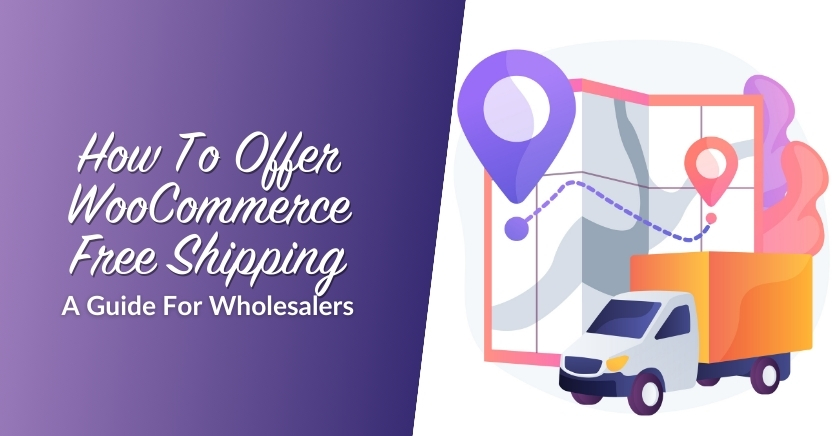Understanding the B2B Buyer

Written By: Tracy Buelow, Vice President of Category Management at Zoro.com
E-commerce and marketplace buying behavior continues to grow in the B2B space, and based on recent studies, those behaviors are here to stay. According to a recent survey, more than 50% of B2B buyers make a daily digital purchase of a good or service for their organization. The main reason why is because it is a much faster process to order the products that they need.1
So let’s talk about the B2B buyer. What do they want? What do they need to efficiently do their jobs? Why do they choose to shop online and where?
Who is the B2B buyer?
The small business market in the United States is massive. There are over 33 million businesses spanning all sectors.2 They come in many different sizes and shapes, but ultimately they all have one thing in common—there is a lot of work to be done and fewer hands to do them. Oftentimes the business owner is selling, managing the operations, buying supplies for the business and maybe even doing the accounting. If it’s not one person, it’s likely a minimal staff with a purchasing or office manager buying supplies for the business. Their goals are often very simple – complete the work on-time and on-budget – but not always easy to accomplish.
What Does the Customer Want?
The basic needs are clear:
- Have the product I need
- Get it to me when I need it
- Price it competitively
Unless these needs are met, additional bells and whistles don’t even matter. Having a wide assortment of products is where marketplaces have really begun to provide key value to customers. Time savings and efficiency is important to buyers, and they prefer to find one place that meets all of their needs, especially as many combine personal purchasing with business purchasing. The more product categories and key brands listed, the higher likelihood the buyer will be able to find anything they need.
In today’s world, the consumer believes that anything can get shipped to their house within a few days, and in some cases, the same day. And, as the lines between consumer purchasing and business purchasing continue to blur, small business owner expectations are translating to the workplace as well. In fact, it’s often more important than ever to minimize or prevent any downtime with fast shipping speeds.
Pricing, which we all know has fluctuated recently, is another area that is key to getting the purchase. E-commerce provides much more transparency when it comes to pricing, leaving less opportunity to “hide” costs. If a price is well out of the range compared to the rest of the market, it won’t even get a look.
Getting Deeper
Customers go through a range of criteria when deciding where to purchase items:
- Where has the item been purchased before? This is often the easiest way for customers to ensure that they’re getting the item that they want and need.
- What if this is an item I’ve not purchased before? They often gravitate towards familiar vendors but may do a broad search to quickly learn who sells the item, at what price, and what options are available.
- What vendors are already familiar? In a recent Zoro study, of those surveyed, 39% of customers stated that they chose to shop the way they did because of familiarity with particular vendors. Some customers also shared that they are not as trusting with new vendors – they will make a small test purchase before attempting to make a more important purchase.
- How important is budget in this shopping instance? If they have a specific budget for particular items, they’ll seek out the lowest prices they can find for that item. Purchasers often feel saving the company money is an important part of their role and value. However, they aren’t always willing to compromise just to save money; sometimes customers are willing to pay for higher-priced items if it’s a brand they trust or specifically need, or if they need an item right away.
- What is convenient? Customers already making a purchase may try to get everything in one place. If the prices are reasonable, they may decide to save themselves trouble and make a single order.
Once you understand these criteria, you can create better customer experiences based on shopping behavior. Research shows that online shoppers typically fall into five main types of e-commerce buying behavior: product-focused, browsing, researchers, bargain-hunters, and one-time shoppers. Each type of customer has a different priority in mind:
- Product-focused customers know exactly what they want, and their goal is speed.
- Browsers are leisurely shoppers who might spend more time looking around at what a site has to offer.
- Researchers are goal-driven like product-focused shoppers but concentrate more on collecting information to make a purchase.
- Bargain hunters are focused on getting the best possible deal.
- One-time shoppers are visiting due to a one-time need and do not have the intention of returning to the site after the initial purchase.3
Manufacturers and distributors need to shake up their business models to keep pace with their target audiences and their buying behaviors. Doing this can be time-consuming and resource intensive, so working with an e-commerce partner or a marketplace often provides the opportunity to accelerate developing an online presence with less investment.
Why Are Customers Choosing Marketplaces?
Marketplaces have really begun to provide key value to shoppers by offering a wide assortment of products. Time savings and efficiency is important to buyers and marketplaces provide the widest assortment. An electrician might need electrical supplies and tools to do the job, supplies for the office and products to maintain a small fleet of vehicles. They can save a lot of time (and money) buying all of those items in one place. Additionally, the pandemic forced people to buy more technical products online, and they learned to do so successfully.
How to Choose the Right E-Commerce Partner
The topic of marketplaces is sure to prompt a lot of discussion. The reality is, there are so many options available now and choosing who to partner with needs to be driven by your own business strategy. The partnership should:
- Be incremental to your business and capture a customer you are not focusing energy on today. Ideally you work with a partner that’s collaborative so you can focus on what’s most important for you and your core customers, which are services and value that an online transaction can’t provide.
- Meet the resource profile you’re willing to commit to. Some marketplaces offer low effort in terms of marketing and management, while others require a team to manage the details. Also be aware of the fees of doing business and any additional investment that may be required to participate.
- Provide a relationship that will partner, not compete, with you on your strategic goals.
Once you’ve committed to take the step and find a partner, you will need to understand their capabilities and how they will drive additional sales for you. Look for one who:
- Creates a consumer-like online shopping experience that reflects current B2B buying expectations
- Delivers exceptional search engine and digital marketing capabilities to strategically reach new customers
- Makes continual investments in their technology platform to meet the changing needs of B2B buyers
- Offers responsive customer service that is available to help customers with questions and concerns
You don’t need to do it alone and take on all of the investment of time and resources yourself. Nothing is free, but if you want to save time and resources while expanding your capabilities, you want to be able to do it efficiently. E-commerce options have different fee structures, and with that, different services. Be prepared for both the financial and the human resources needed to support the work. When you account for staff and expertise needed on your end, you can truly evaluate the ROI of the investment.
What Drives Success in Partnering with a Marketplace?
If you choose to partner, you want to ensure that you will be successful. Center yourself around what will drive value to customers. All of the same elements that are core to meeting customer needs – a good assortment, consistent fulfillment, good pricing and rich content – are key to driving results online and what’s important to deliver in order to be successful.
Bottom line, an e-commerce partnership can be a great relationship to help you target more expensive or harder to reach customers. You just need to do the due diligence to understand which partner and model is right for you.
Sources:
- 2023 Digital Commerce 360/Forrester B2B Buyer Survey, https://www.digitalcommerce360.com/2023/04/25/b2b-ecommerce-buyers/
- United States Small Business Administration Office of Advocacy, Frequently Asked Questions about Small Businesses 2023, https://advocacy.sba.gov/2023/03/07/frequently-asked-questions-about-small-business-2023/
- The Nielsen Norman Group, Designing for 5 Types of E-commerce Shoppers
About the Author

With more than 25 years of experience in sales and marketing, Tracy Buelow brings a wealth of knowledge to her role as the VP of Category Management at Zoro. In her role, Tracy and her team develop collaborative partnerships with Zoro’s valued distributors, manufacturers, and suppliers to grow endless product assortment and accelerate profitability for both Zoro and its partners.
Before joining Zoro in 2019, Tracy held sales leadership positions and successive roles in marketing at Kimberly-Clark for well-known consumer brands including Kleenex®, Poise®, and Viva®. She has extensive experience in both the B2B and B2C sectors, having also held sales and marketing roles at Taleo and Manpower.
Tracy received her BBA in International Business from the University of Wisconsin-Whitewater, where she also earned her MBA in Marketing. She resides in Hortonville, WI, with her husband and has two college-aged sons. Tracy and her family are huge fans of Wisconsin sports teams.
The post Understanding the B2B Buyer appeared first on National Association of Wholesaler-Distributors.











